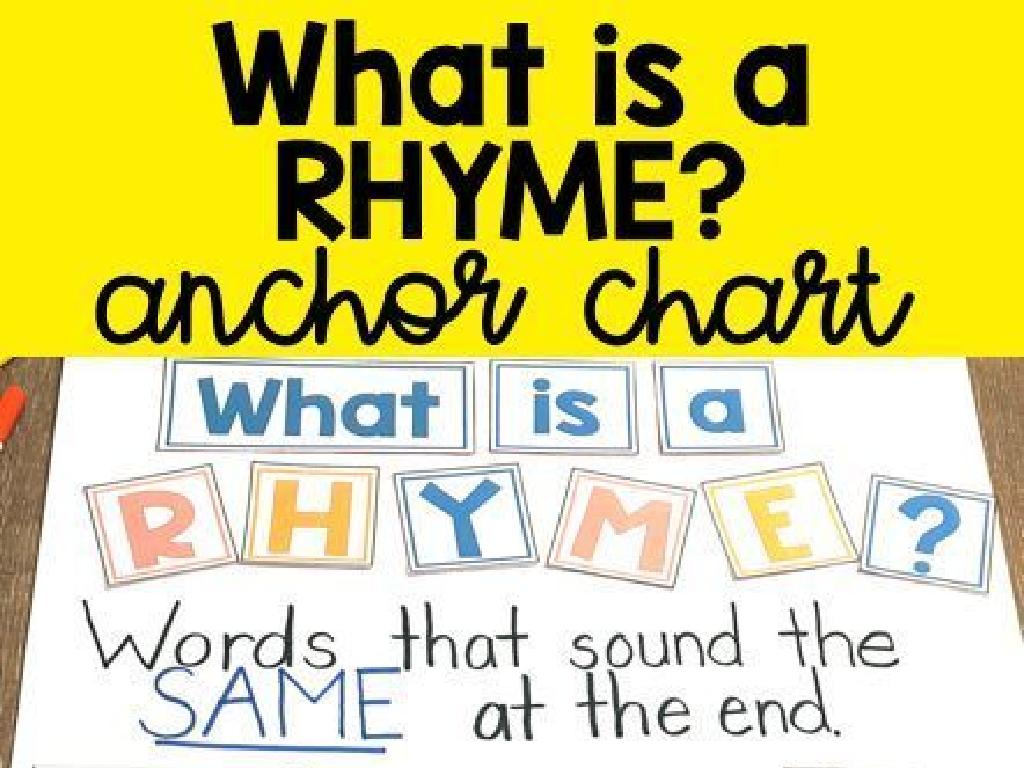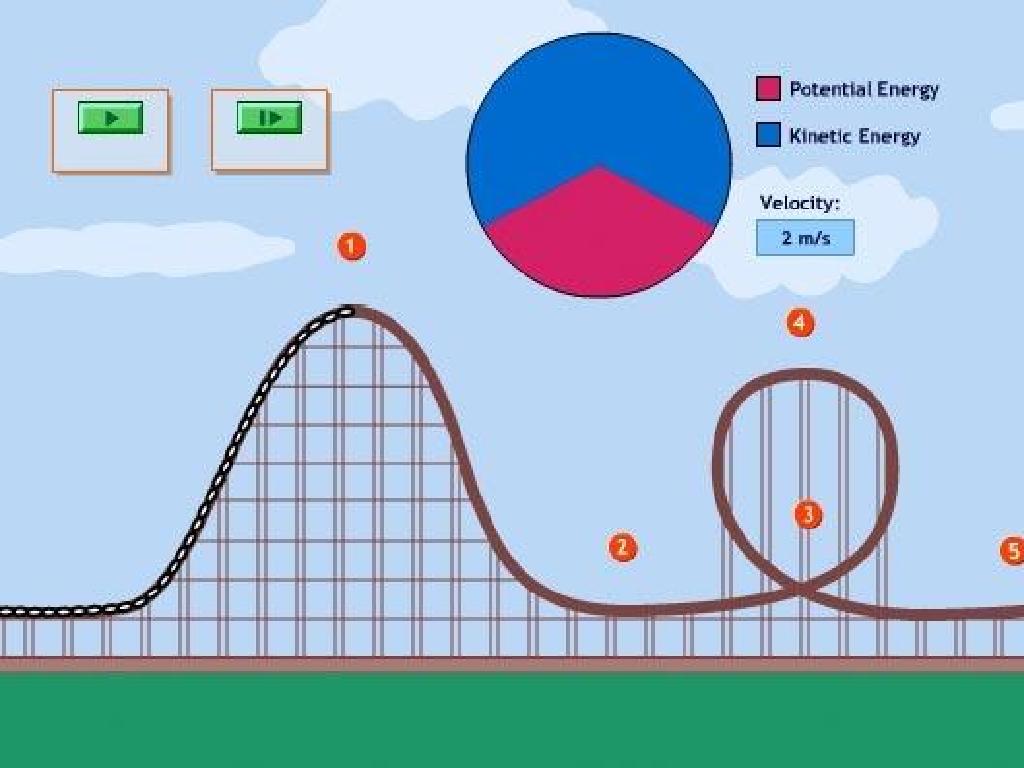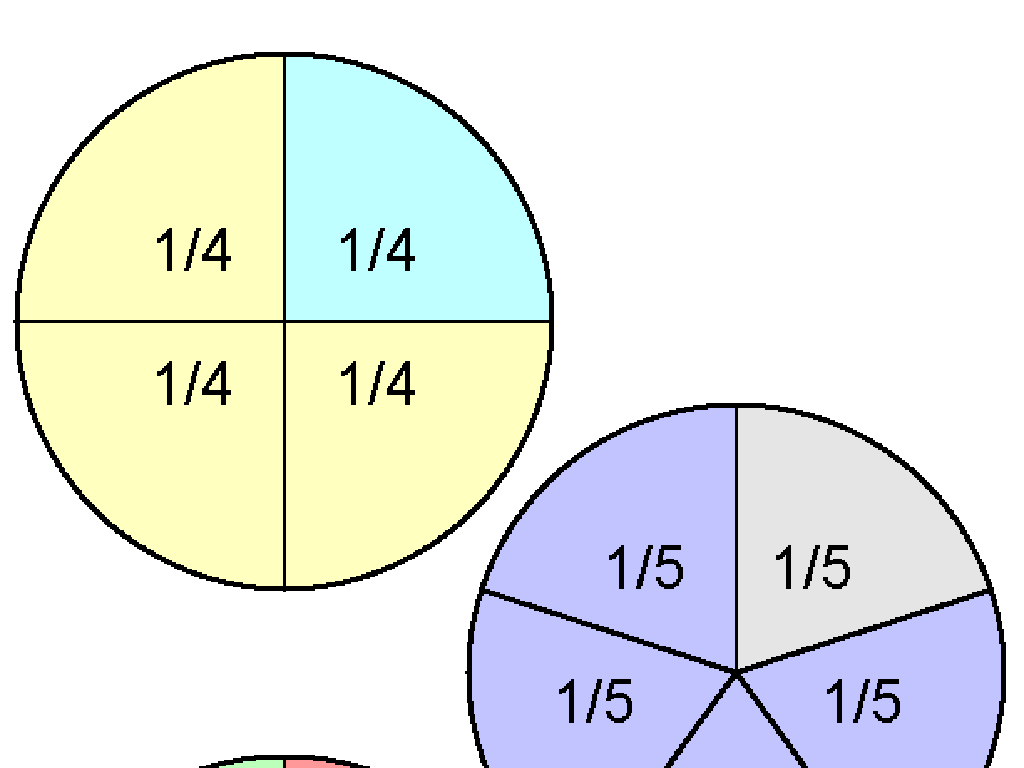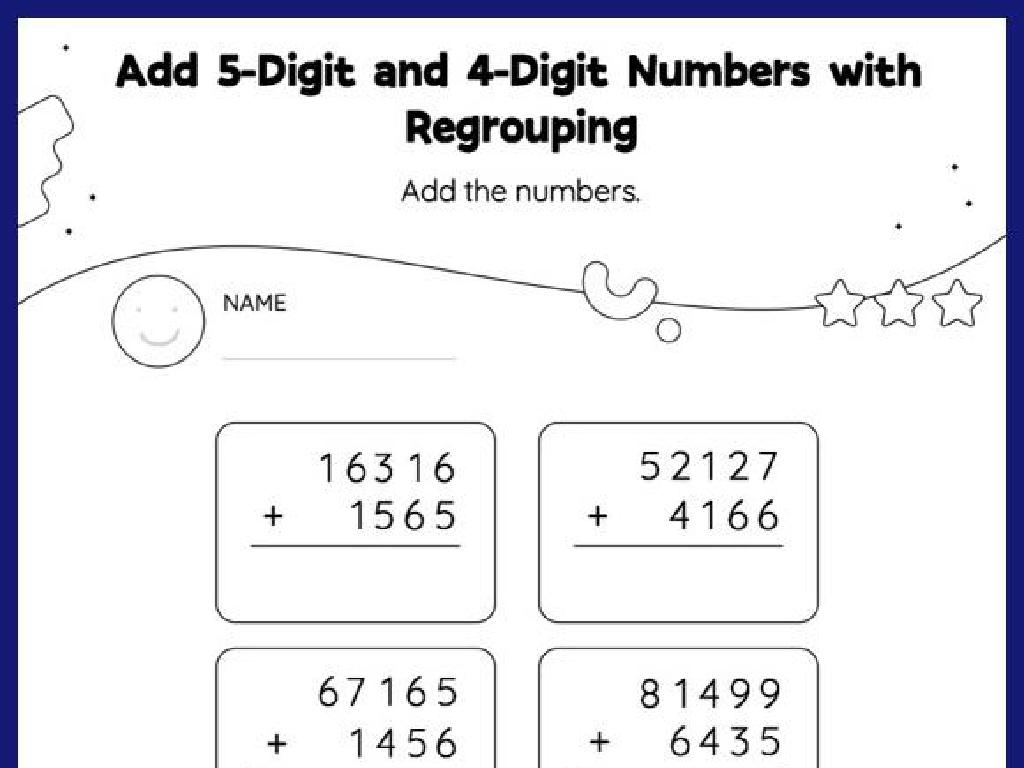What Is True About The Pattern Made By The Rule?
Subject: Math
Grade: Fourth grade
Topic: Patterns And Sequences
Please LOG IN to download the presentation. Access is available to registered users only.
View More Content
Exploring Patterns in Math and Life
– What is a pattern?
– A pattern is a repeating sequence of shapes, colors, numbers, or objects.
– Patterns around us
– Patterns are everywhere: in nature, art, music, and even in our routines.
– Recognizing simple patterns
– Examples: ABAB, 123123, red-blue-red-blue, or circle-triangle-circle-triangle.
– Patterns in daily activities
– Daily patterns: brushing teeth, then breakfast, or school days followed by weekends.
|
This slide introduces the concept of patterns to fourth-grade students, emphasizing their presence in both mathematics and everyday life. Begin by defining a pattern and discussing its characteristics, such as repetition and predictability. Highlight how patterns can be visual, numerical, or behavioral, and use relatable examples to make the concept tangible for the students. Encourage them to think of patterns they encounter daily, like the order of activities in their routine or patterns in nature, such as the seasons. This will help them understand the importance of patterns and prepare them to recognize and create patterns in more complex mathematical contexts.
Exploring Patterns and Sequences
– Patterns vs. Sequences
– Patterns repeat, sequences follow a rule
– Identifying a Sequence
– Look for a rule that numbers follow
– Creating Number Sequences
– Use a rule to make your own sequence
|
This slide introduces students to the concepts of patterns and sequences, highlighting the difference between the two. Patterns are repeating sets, while sequences are ordered lists of numbers that follow a specific rule. Teach students how to identify the rule in a sequence, such as adding a certain number each time. Then, encourage them to apply this understanding by creating their own number sequences using a rule they come up with. This activity will help solidify their understanding of sequences and how they are generated. Provide examples of sequences and have students practice identifying the rule and continuing the sequence.
Understanding Rules in Patterns
– Define a pattern rule
– A pattern rule tells us how a pattern is formed.
– Examples of pattern rules
– For example, ‘add 2’ or ‘alternate colors’.
– Practice identifying rules
– Look at a sequence and find what repeats.
– Discuss pattern observations
|
This slide introduces the concept of rules in patterns, which are instructions that tell us how patterns are created. Start by defining a pattern rule and then show various examples, such as adding a number to get the next term or changing colors in a sequence. Encourage students to practice by looking at different patterns and identifying the rule that governs them. Discuss how recognizing these rules can help in predicting future elements of the pattern. For the activity, provide sequences and have students determine the rule for each. This will help solidify their understanding of patterns and prepare them for more complex sequences in higher grades.
Predicting Patterns in Sequences
– Predict the next pattern item
– Look at the sequence and find the rule, like adding 2 each time
– Use rules for accurate predictions
– Apply the rule to the last item to guess what comes next
– Group activity: Next three items
– Work together to find the next three items in different sequences
|
This slide introduces students to the concept of predicting the next items in a pattern using a given rule. Start by explaining how to identify the rule of a pattern, such as adding a certain number or following a specific sequence of shapes. Then, demonstrate how to apply this rule to predict subsequent items. For the group activity, divide the class into small groups and provide each with a different sequence. Guide them to use the rule to predict the next three items. This activity encourages collaboration and critical thinking as students apply their understanding of patterns and rules. Be prepared with several examples of patterns with varying complexity to cater to different skill levels within the class.
Patterns in Real Life
– Discovering patterns around us
– Exploring nature’s patterns
– Leaves and snowflakes show repeating shapes and designs
– Recognizing man-made patterns
– Tiles and fabrics often have repeated colors or shapes
– Understanding patterns in art
– Art can have patterns in color, shape, or brushstrokes
|
This slide aims to help students recognize and appreciate patterns in their everyday environment. Start by encouraging them to observe the world around them and identify patterns they see daily. Discuss how nature creates intricate patterns, such as the symmetrical structure of leaves or the unique yet orderly designs of snowflakes. Highlight how humans use patterns for aesthetic and functional purposes, such as in tiling floors or designing fabrics. Finally, introduce the concept of patterns in art, explaining how artists use repetition to create rhythm and balance in their work. Encourage students to bring examples of patterns they find at home or outside to the next class for a show and tell.
Class Activity: Creating Patterns
– Let’s make our own patterns!
– You’ll need colored blocks, paper, pencils
– Create a pattern using the blocks
– Arrange blocks in a sequence, notice the pattern
– Write down the rule of your pattern
– Is it adding, subtracting, or alternating colors?
|
This activity is designed to help students understand and create their own patterns using tangible materials. Provide each student with a set of colored blocks, paper, and pencils. Guide them to arrange the blocks in a specific order that repeats, such as red-blue-red-blue or big-small-big-small. Once they’ve created a pattern, ask them to write down the rule that explains their pattern, such as ‘alternate colors’ or ‘increase size by one block.’ Encourage creativity and allow them to explore different types of patterns. Possible variations for the activity could include creating patterns with different shapes, using numbers to form sequences, or even making rhythmic patterns with sounds. This hands-on experience reinforces the concept of patterns and sequences in a fun and interactive way.
Sharing Our Patterns
– Present your pattern to the class
– Explain your pattern’s rule
– What sequence did you use? How did you decide what comes next?
– Class votes on creativity
– Discuss patterns with peers
– Share thoughts on what makes a pattern interesting
|
This slide is for a class activity where students will engage with patterns and sequences by presenting their own created patterns to the class. Each student should clearly explain the rule they used to create their pattern, such as ‘add 2’ or ‘alternate colors’. After presentations, the class will vote on the most creative pattern, encouraging students to think critically about what makes a pattern interesting and engaging. Teachers should facilitate the discussion and ensure that each student has the opportunity to present and receive feedback. Possible activities include creating patterns with physical objects, drawing them, or using numbers and shapes. The goal is to reinforce the understanding of sequences and the rules that govern them.
Patterns Around Us: Review & Homework
– Review pattern recognition
– Homework: Find 5 patterns
– Look for patterns at home or outside
– Draw the patterns observed
– Use paper to sketch the patterns
– Share findings in next class
– Be ready to discuss your patterns
|
This slide concludes our lesson on patterns and sequences. We’ve learned how to identify and describe patterns, which are arrangements that follow a rule. For homework, students are tasked to observe their surroundings and find patterns, which could be in nature, in art, or in everyday objects. They should draw these patterns to help visualize the concept. Encourage creativity and attention to detail. In the next class, we’ll have a discussion where students will share their findings, allowing them to see the variety of patterns in different environments and reinforcing their understanding of the concept.





